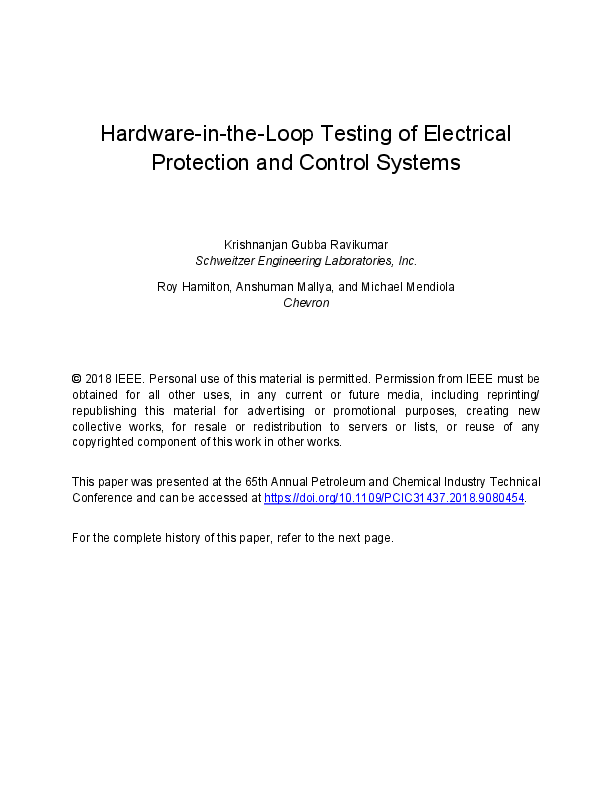Authors: Krishnanjan Gubba Ravikumar (Schweitzer Engineering Laboratories, Inc.), Roy Hamilton, Anshuman Mallya, Michael Mendiola (Chevron)
This technical paper explores the critical role of Hardware-in-the-Loop (HIL) simulation in validating Power Management Systems (PMS) for large-scale oil and gas facilities. It details the integration of new greenfield plants with existing brownfield systems, focusing on essential functionalities like protection, load shedding, and synchronization.
Abstract
The document outlines the design, development, and validation of a real-time HIL digital simulation system for a major oil and gas project. This system enables testing of a 1 GW power system across a vast region, including its islanded configurations. It shares practical insights and lessons learned from HIL testing, covering complex cutover sequences and the validation of PMS control algorithms.
Introduction to HIL Testing
Hardware-in-the-Loop (HIL) simulations are essential for validating control system algorithms by integrating a power system model with actual control hardware. This paper focuses on HIL simulation for islanded power systems, particularly in oil fields, where Power Management Systems (PMS) are vital for critical operations. It details the HIL system developed for a Eurasian oil and gas facility, addressing the integration of new and existing power infrastructure.
Power Management System (PMS) Overview
The PMS discussed includes both slow- and high-speed control systems designed to ensure electrical system stability. Key functions covered are automatic generation control, voltage control, island control, load shedding, generation shedding, decoupling, and autosynchronization. The paper explains how these systems manage power balance during various disturbances.
Simulation System and Testing Procedures
A comprehensive HIL simulation setup, featuring a digital real-time simulator (DRTS) and PMS equipment, was employed. The testing methodology involves detailed model development, rigorous validation, power system studies, hardware interfacing, and executing HIL tests. This process validates system performance, identifies operational boundaries, and supports operator training.
Dynamic Simulations and Key Findings
The paper presents results from numerous HIL simulations, including case studies on generator load acceptance, responses to faults, and load-shedding actions. Key takeaways highlight the value of HIL testing for understanding system dynamics, optimizing control strategies like load shedding, and improving overall system reliability and protection.
Conclusions
HIL testing is a critical step for verifying control systems before deployment, offering insights into complex scenarios and reducing commissioning time. The paper emphasizes the importance of accurate dynamic models, proper system setup, and thorough testing for ensuring the stability and reliability of power systems in industrial applications.
Further Information
This work was presented at the 65th Annual IEEE IAS Petroleum and Chemical Industry Technical Conference. Access to the full paper is available via DOI.








